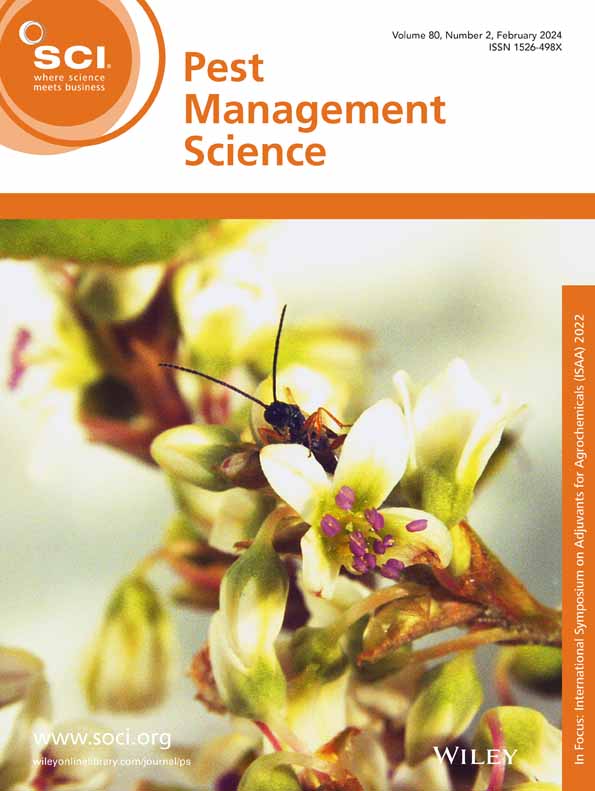小菜蛾丝素蛋白基因敲除会导致适应性和生产性能下降
IF 3.8
1区 农林科学
Q1 AGRONOMY
引用次数: 0
摘要
昆虫的吐丝能力对它们的生存、繁殖以及与环境的互动至关重要。小菜蛾(Plutella xylostella)是一种严重的农业害虫,它依赖于蚕丝生产,这影响了小菜蛾的行为和种群动态。结果本研究采用CRISPR/Cas9技术敲除丝素蛋白重链(PxFibH)、丝素蛋白轻链(PxFibL)和丝素六聚蛋白(PxP25) 3个基因,探讨其在丝腺发育中的作用及相关生物学性状。我们成功地产生了PxFibH、PxFibL和PxP25敲除突变体,这些突变体显示出茧形成缺陷并发育成裸蛹。进一步分析发现,蚕丝腺结构和各种生物学参数发生了显著变化,包括幼虫死亡率升高、发育时间延长、蛹重减轻和成虫寿命缩短。结论丝素蛋白基因在小菜蚕丝生产和生长发育中的重要作用,是创新害虫防治策略的潜在靶点。©2025化学工业协会。本文章由计算机程序翻译,如有差异,请以英文原文为准。

Knockout of silk fibroin genes in Plutella xylostella results in decreased fitness and performance
BACKGROUNDThe ability of insects to spin silk is crucial for their survival, reproduction, and interactions with the environment. The diamondback moth (DBM), Plutella xylostella , a serious agricultural pest, relies on silk production, which influences its behavior and population dynamics.RESULTSThis study employed CRISPR/Cas9 technology to knock out three genes, that is, silk fibroin heavy chain (PxFibH ), silk fibroin light chain (PxFibL ), and fibrohexamerin (PxP25 ), to investigate their roles in silk gland development and related biological traits. We successfully generated PxFibH , PxFibL , and PxP25 knockout mutants, which displayed defective cocoon formation and developed into naked pupae. Further analysis revealed significant alterations in silk gland structure and various biological parameters, including increased larval mortality, prolonged developmental time, reduced pupal weight, and shortened adult lifespan.CONCLUSIONSThese findings highlight the importance of silk fibroin genes in silk production and growth development in P. xylostella , positioning them as potential targets for innovative pest control strategies. © 2025 Society of Chemical Industry.
求助全文
通过发布文献求助,成功后即可免费获取论文全文。
去求助
来源期刊

Pest Management Science
农林科学-昆虫学
CiteScore
7.90
自引率
9.80%
发文量
553
审稿时长
4.8 months
期刊介绍:
Pest Management Science is the international journal of research and development in crop protection and pest control. Since its launch in 1970, the journal has become the premier forum for papers on the discovery, application, and impact on the environment of products and strategies designed for pest management.
Published for SCI by John Wiley & Sons Ltd.
 求助内容:
求助内容: 应助结果提醒方式:
应助结果提醒方式:


